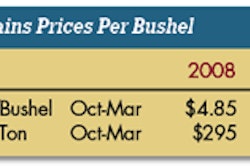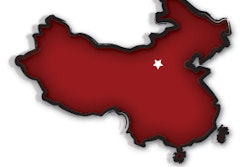Russian troops marching into Georgia made international headlines as the Beijing Olympic Games opened in early August, but a different Russian resurgence also made headlines recently, and this will have a significant impact on the U.S. poultry industry. Chicken meat production in Russia bottomed out in 1999 at 0.35 million metric tons, down from 1.428 million metric tons in 1992. Since 1999, chicken meat production in Russia has rebounded to an estimated 1.5 million metric tons this year, increasing at an average rate of 15.6 percent per year. Chicken meat production in Russia tripled from 2002 to 2008, and this resurgence will likely lead to fewer U.S. exports to the Russian Federation.
Chart 1: Chicken meat in Russia
Chicken consumption in Russia stayed relatively flat until 2004, but it has increased by 60 percent since that time. Per capita chicken meat consumption in Russia is expected to reach nearly 42 pounds this year. While it is not known what the ceiling might be on chicken consumption, the Russian government is taking steps to protect its resurgent broiler industry from import competition. A new method for calculating 2009 meat and poultry quotas, based on the average volume traded in the three years from 2004 to 2007, has been proposed by the Russian government. Imports in the previous year had been used in setting the next year's quota. This new method may lead to a reduction in imports outside of quota in the second half of 2008, since in some years larger volumes were imported in the latter part of the year to gain quota allocation for the following year. Under an earlier agreement, 75 percent of the quota amount was reserved for U.S. producers.
The Russian Agricultural Minister has indicated that the time has come to make a downward revision to quotas and imports. After 2009, Russia has the option of switching from quotas to customs duties which could increase the level of protection offered to domestic producers and reduce imports.
After an inspection tour this summer, the Russian Veterinary and Phytosanitary Service (VPSS) delisted 19 of the U.S. poultry plants that were audited by Russian inspectors this summer. Also, Russia has placed 29 additional U.S. plants on a "watch list," citing test results that showed elevated levels of arsenic or antibiotics in their products.
Russia also imports turkey from the USA, and it is expected to import around 30,000 tons of turkey meat products in 2008. Most Russian turkey imports come from the USA. These exports are expected to represent around 10 percent of the USA's total turkey exports this year.
Chart 2: Turkey meat in Russia
Russia is the USA's largest export customer for chicken and a major export customer for turkey. The resurgence of Russia's poultry industry could seriously reduce export opportunities for U.S. producers in this market, and tanks rolling across the Russian border probably won't help either.
















